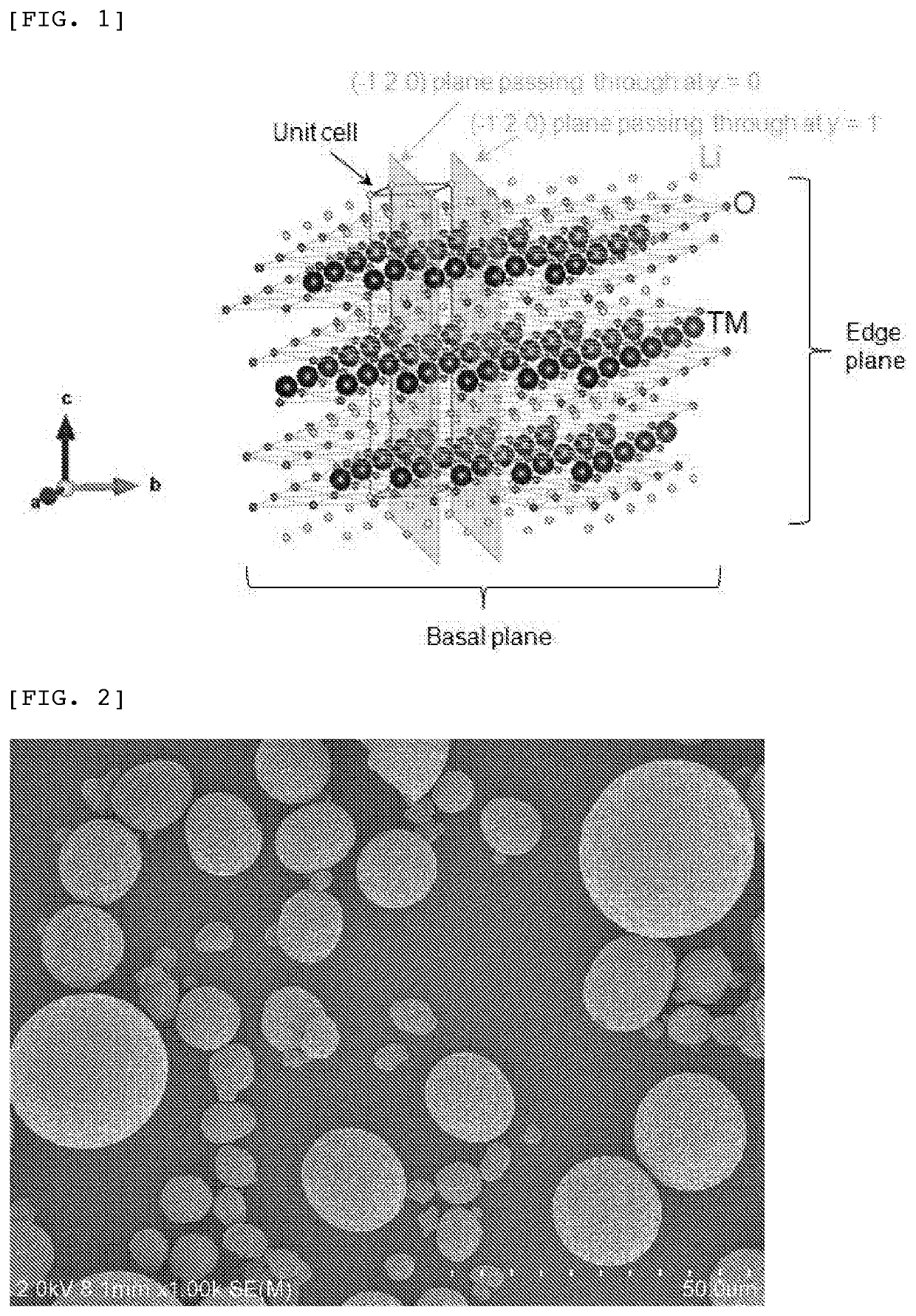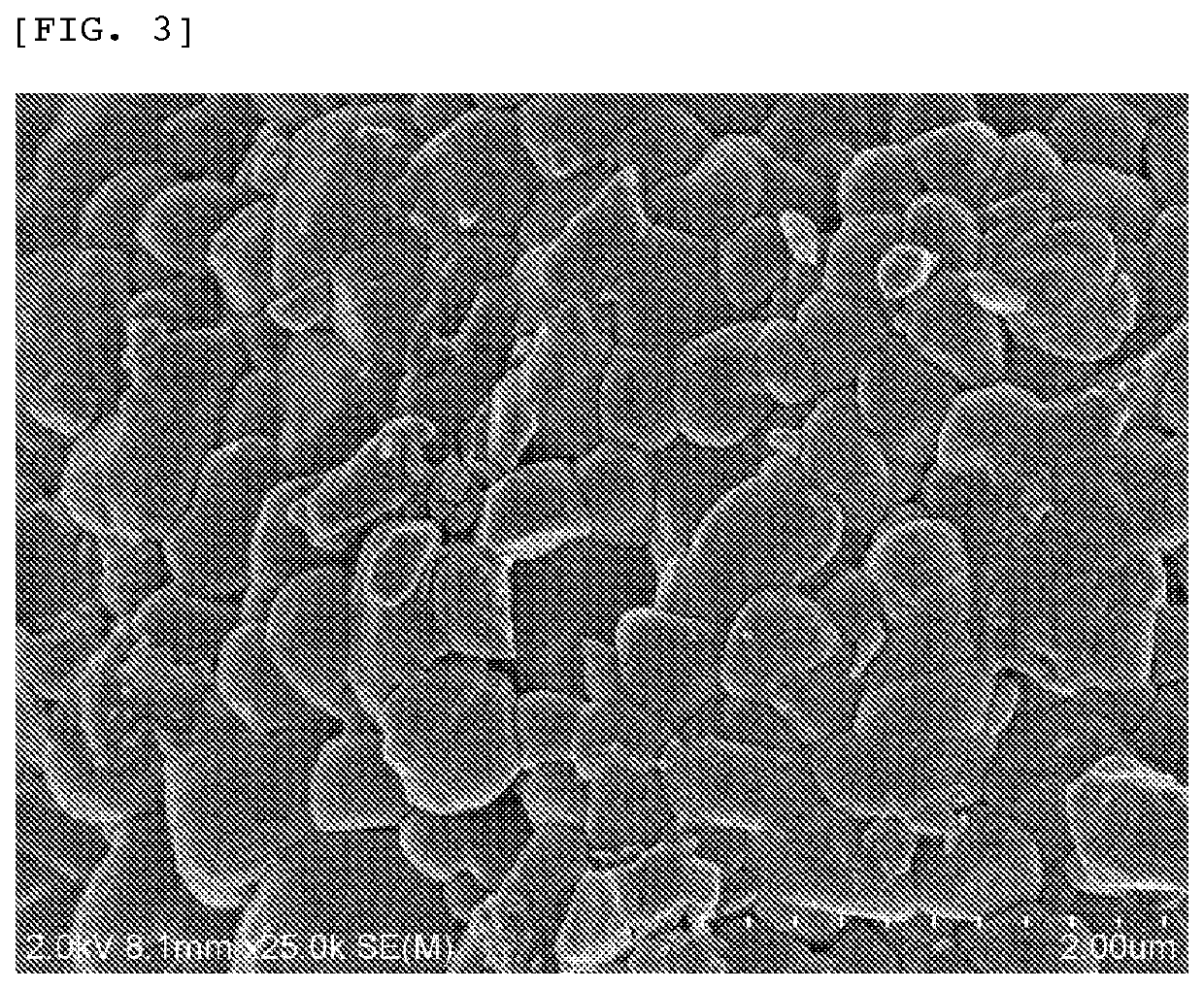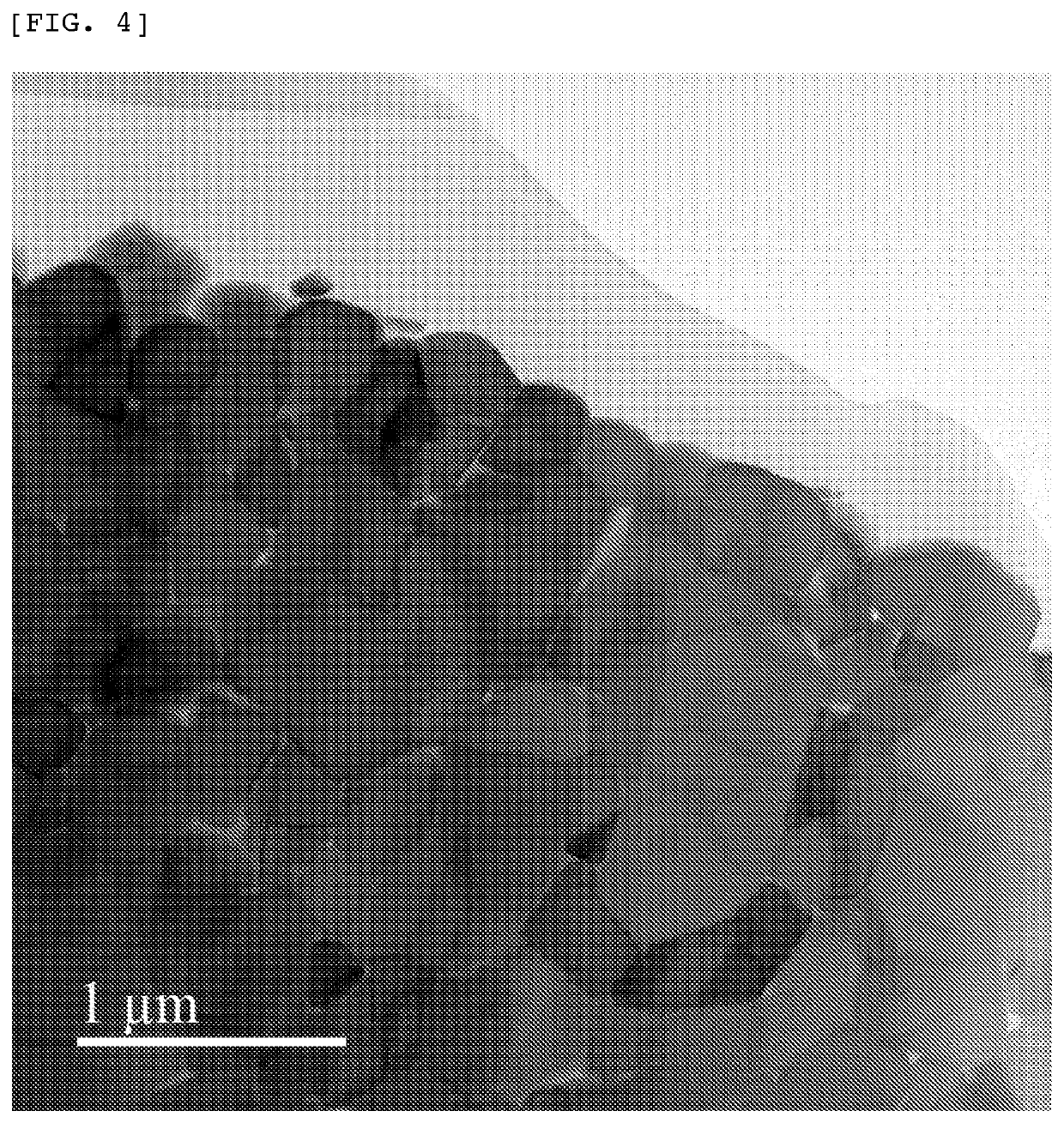Positive electrode active substance particles comprising lithium nickelate composite oxide, and non-aqueous electrolyte secondary battery
a lithium nickelate and composite oxide technology, applied in the direction of cell components, electrochemical generators, nickel compounds, etc., can solve the problems of deterioration in repeated charge/discharge cycle characteristics, structural defects, and conventional positive electrode active substance particles that have not shown good stability of lithium nickelate crystals, etc., to suppress the occurrence of side reactions, excellent charge/discharge cycle characteristics, and high epitaxy
- Summary
- Abstract
- Description
- Claims
- Application Information
AI Technical Summary
Benefits of technology
Problems solved by technology
Method used
Image
Examples
example 1
[0088]Cobalt-containing nickel hydroxide Ni0.84Co0.16(OH)2 as a precursor was obtained by a crystallization method via an ammonia complex in a water solvent over several days. The cobalt-containing nickel hydroxide, lithium hydroxide monohydrate LiOH.H2O and aluminum hydroxide Al(OH)3 were weighed in predetermined amounts such as the molar ratio between elements Li, Ni, Co and Al therein was Li:Ni:Co:Al=1.02:0.81:0.15:0.04. Thereafter, these compounds were mixed with each other using a high-speed mixer, and the resulting mixture was calcined in an oxygen atmosphere at 770° C. using a roller hearth kiln, thereby obtaining a lithium nickelate composite oxide capable of being formed into a core particle X.
[0089]The resulting particles capable of being formed into a core particle X were treated by an atomic layer deposition method. In the atomic layer deposition method, trimethyl aluminum Al(CH3)3 was used as a raw material gas A, and H2O was used as a raw material gas B. The respective...
example 2
[0124]Using the lithium nickelate composite oxide Li1.02Ni0.81Co0.15Al0.04O2 having a layer structure capable of being formed into the core particle X which were obtained in Example 1, a coating compound Y was formed thereon by an atomic layer deposition method. The treating conditions used in the atomic layer deposition method were the same as those used in Example 1, i.e., trimethyl aluminum Al(CH3)3 was used as a raw material gas A, and H2O was used as a raw material gas B, and these raw materials were subjected to 4 cycle treatment at 180° C. Thereafter, the obtained particles were treated in atmospheric air at 350° C. for 2 hr to increase the degree of crystallinity of the coating compound Y. The thus obtained particles were the lithium nickelate composite oxide particles that were provided thereon with the coating compound Y having a high degree of epitaxy. The resulting composite oxide particles were used as positive electrode active substance particles and evaluated by the f...
PUM
| Property | Measurement | Unit |
|---|---|---|
| degree of crystallinity | aaaaa | aaaaa |
| thickness | aaaaa | aaaaa |
| median diameter D50 | aaaaa | aaaaa |
Abstract
Description
Claims
Application Information
 Login to View More
Login to View More - R&D
- Intellectual Property
- Life Sciences
- Materials
- Tech Scout
- Unparalleled Data Quality
- Higher Quality Content
- 60% Fewer Hallucinations
Browse by: Latest US Patents, China's latest patents, Technical Efficacy Thesaurus, Application Domain, Technology Topic, Popular Technical Reports.
© 2025 PatSnap. All rights reserved.Legal|Privacy policy|Modern Slavery Act Transparency Statement|Sitemap|About US| Contact US: help@patsnap.com



